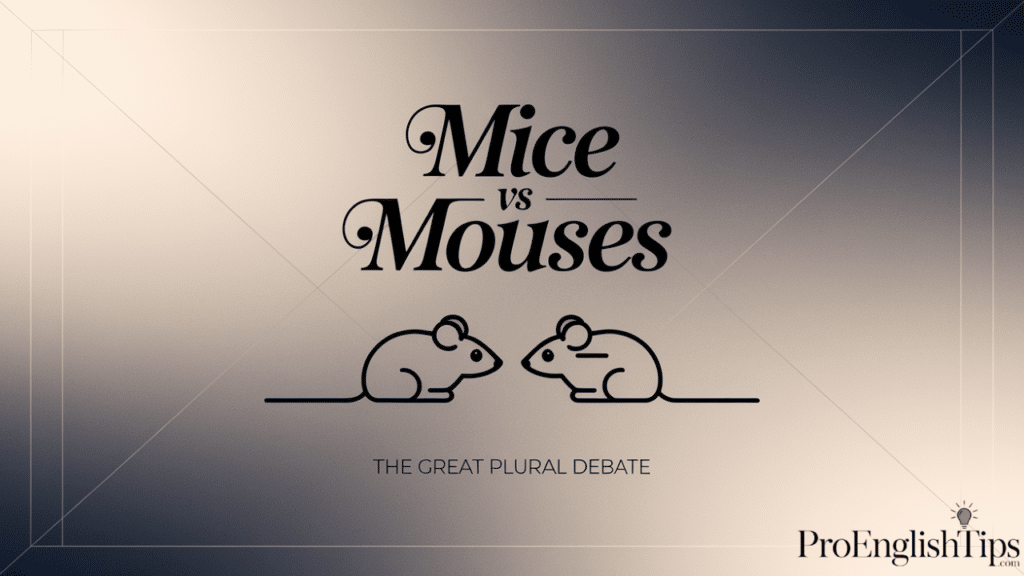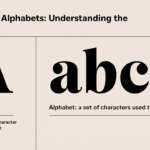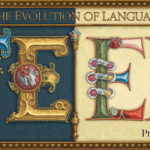Language is a fascinating landscape of linguistic intricacies that often challenge our understanding of grammar rules. Among the most intriguing grammatical conundrums lies the seemingly simple question: How do we correctly pluralize the word “mouse”?
This exploration delves deep into the word transformation and pluralization rules that govern this linguistic mystery.
The Linguistic Origins
The journey of the word “mouse” begins with its rich etymological background. Rooted in Old English “mūs”, the term has undergone significant morphological analysis throughout linguistic history. Traditionally, the word follows an irregular plural form, mice, which deviates from standard English pluralization patterns.
| Word Form | Etymology | Origin Period | Language Family |
|---|---|---|---|
| Mouse | Old English mūs | Pre-12th Century | Germanic |
| Mice | Old English mȳs | Pre-12th Century | Germanic |
| Mouses | Modern English variation | 20th-21st Century | English Adaptation |
| Murine | Scientific Latin term | Scientific Classification | Latin |
| Rodent | Zoological term | Scientific Classification | Latin |
| Computer Mouse | Technological term | Mid-20th Century | English Technical |
| Electronic Mouse | Modern technological | Late 20th Century | English Technical |
| Wireless Mouse | Contemporary tech | 21st Century | English Technical |
| Gaming Mouse | Specialized tech | Late 20th Century | English Technical |
| Optical Mouse | Technological innovation | Late 20th Century | English Technical |
Grammatical Perspectives
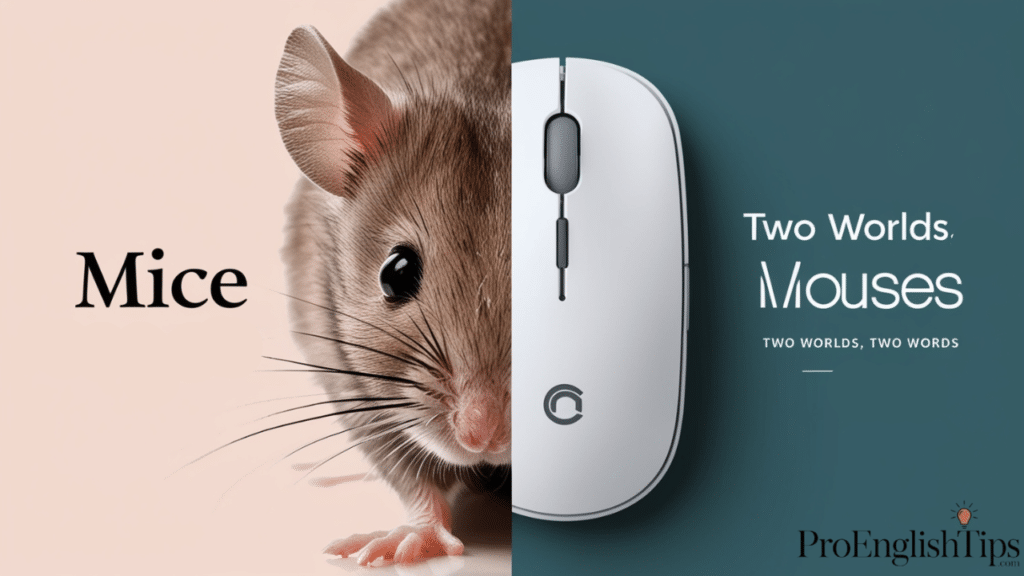
Linguistic rules provide fascinating insights into the complexities of noun processing. The traditional plural “mice” represents an irregular plural form that challenges standard language mechanics. This transformation reflects the deep-rooted language processing mechanisms inherent in English grammar.
You Might Like: Make Do or Make Due: Clarifying Common Mix-Ups
Technical and Scientific Context
In the realm of text processing and term recognition, the pluralization of “mouse” becomes particularly intriguing. Douglas Engelbart, the inventor of the computer mouse, likely never anticipated the grammatical debates his invention would spark in technical terminology.
| Context | Preferred Form | Rationale | Usage Frequency |
|---|---|---|---|
| Zoological Writing | Mice | Scientific Standard | High |
| Technical Documentation | Mouses | Descriptive Clarity | Moderate |
| Academic Papers | Mice | Linguistic Tradition | High |
| Computer Manuals | Mouses | Technical Specificity | Moderate |
| Casual Conversation | Depends on Context | Contextual Flexibility | Variable |
| Professional Writing | Mice | Grammatical Precision | High |
| Technical Specifications | Mouses | Technical Clarity | Moderate |
| Scientific Research | Mice | Biological Accuracy | High |
| Marketing Materials | Mouses | Commercial Preference | Moderate |
| Legal Documents | Mice | Formal Language | High |
Contextual Usage Examples
Consider the following scenarios that highlight the nuanced usage of “mice” and “mouses”:
Professor Emily Rodriguez might write in an academic email:
“Our research department has acquired three new computer mice for the biomechanics lab.” Here, the traditional plural “mice” demonstrates scholarly precision.
In contrast, a technical support representative named Mark Johnson might draft:
“We recommend replacing all mouses in the customer service department to ensure optimal functionality.” This usage reflects technical communication preferences.
Technological Terminology
The word relationships in technological contexts present unique challenges. Language evolution has gradually accepted “mouses” as a valid plural in specific technical scenarios, particularly when referring to computer input devices.
| Device Type | Plural Form | Professional Context | Linguistic Accuracy |
|---|---|---|---|
| Wired Mouse | Mouses | IT Documentation | Technically Acceptable |
| Wireless Mouse | Mouses | Technical Manuals | Contextually Appropriate |
| Optical Mouse | Mouses | Hardware Specifications | Professionally Used |
| Gaming Mouse | Mouses | Gaming Industry | Industry Standard |
| Ergonomic Mouse | Mouses | Workplace Ergonomics | Professionally Recognized |
| Bluetooth Mouse | Mouses | Technology Descriptions | Technically Precise |
| Medical Research Mouse | Mice | Scientific Literature | Scientifically Correct |
| Laboratory Mouse | Mice | Biological Research | Academically Preferred |
| Computer Peripheral Mouse | Mouses | Technical Writing | Industry Usage |
| Tracking Mouse | Mouses | Navigation Systems | Technical Terminology |
Linguistic Validation
Word classification and grammar checking algorithms increasingly recognize the contextual flexibility of “mouses” in technical domains. Modern language validation tools acknowledge the evolving nature of technological terminology.
You Might Like: Apostrophe After S: Easy Rules and Examples
Professional Writing Considerations
Professional writers and technical communicators must navigate the delicate balance between grammatical usage and communication clarity. The choice between “mice” and “mouses” depends on the specific semantic context and intended audience.
| Writing Domain | Preferred Plural | Reasoning |
|---|---|---|
| Scientific Papers | Mice | Academic Precision |
| Technical Manuals | Mouses | Technical Specificity |
| Zoological Publications | Mice | Biological Accuracy |
| Computer Documentation | Mouses | Technical Clarity |
| General Journalism | Context-Dependent | Flexible Usage |
| Marketing Materials | Mouses | Commercial Appeal |
| Legal Documentation | Mice | Formal Language |
| Educational Texts | Mice | Linguistic Tradition |
Global Linguistic Perspectives
Language processing reveals fascinating insights into how different cultures and linguistic traditions approach the pluralization of “mouse”. The word variations extend beyond English, demonstrating the complex nature of grammatical forms across global communication contexts.
| Language | Singular | Plural | Linguistic Family | Notes |
|---|---|---|---|---|
| English | Mouse | Mice/Mouses | Germanic | Contextual variation |
| Spanish | Ratón | Ratones | Romance | Follows regular pluralization |
| French | Souris | Souris | Romance | Unchanged plural form |
| German | Maus | Mäuse | Germanic | Traditional irregular plural |
| Italian | Topo | Topi | Romance | Regular pluralization |
| Russian | Мышь | Мыши | Slavic | Irregular plural form |
| Japanese | マウス | マウス | Borrowed term | Unchanged in plural |
| Dutch | Muis | Muizen | Germanic | Similar to English irregular form |
| Portuguese | Rato | Ratos | Romance | Regular pluralization |
| Swedish | Mus | Möss | Germanic | Similar irregular pattern |
Technological Evolution and Language Adaptation
The word etymology of “mouses” demonstrates how technological innovation drives language evolution. As computer peripherals became ubiquitous, technical writers and professionals began developing language standards that accommodate emerging technological terminology.
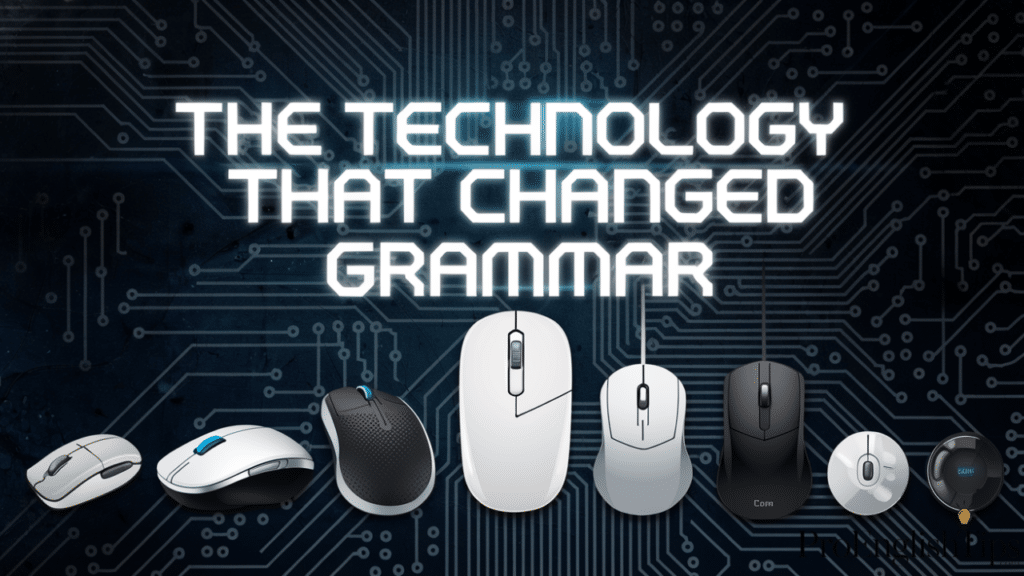
Pronunciation Considerations
Interestingly, the pronunciation of “mouses” varies significantly. Some speakers emphasize a soft “s” sound, while others use a more pronounced “z” sound. This linguistic mechanics variation adds another layer of complexity to the pluralization rules.
| Pronunciation Style | Context | Typical Users | Linguistic Characteristics |
|---|---|---|---|
| Soft “s” Ending | Academic | Linguists | Closer to traditional English |
| Hard “z” Ending | Technical | IT Professionals | Modern technological approach |
| Hybrid Pronunciation | Casual | General Users | Contextually flexible |
| Scientific Pronunciation | Research | Researchers | Precise and measured |
| Marketing Pronunciation | Commercial | Sales Professionals | Emphasizes technological aspect |
| Regional Variation | Geographical | Local Speakers | Influenced by dialect |
| Professional Terminology | Technical Writing | Documentation Experts | Standardized approach |
| Informal Communication | Conversational | General Public | Variable and adaptive |
Computational Linguistics Perspective
Natural Language Processing (NLP) algorithms increasingly recognize the complexity of word transformation. Plural detection mechanisms must account for both traditional and emerging linguistic patterns, demonstrating the dynamic nature of language term recognition.
Cultural and Professional Implications
The choice between “mice” and “mouses” often reflects more than grammatical preference. It reveals insights into professional culture, technological literacy, and communication strategies within specific domains.
| Professional Domain | Preferred Usage | Underlying Reasoning |
|---|---|---|
| Academic Research | Mice | Traditional linguistic accuracy |
| Technology Sector | Mouses | Technical specificity |
| Scientific Publications | Mice | Biological precision |
| Computer Manufacturing | Mouses | Product-specific terminology |
| Educational Institutions | Mice | Linguistic conservation |
| Software Development | Mouses | Technical documentation standard |
| Linguistic Research | Context-Dependent | Analytical flexibility |
Psychological Aspects of Language Choice
The selection between “mice” and “mouses” reveals fascinating insights into semantic context and psychological language preferences. Individuals often unconsciously choose based on their professional background, educational experience, and personal communication style.
Future of Linguistic Adaptation
As language processing continues to evolve, we can anticipate further flexibility in pluralization rules. The boundaries between traditional grammar and technological terminology will likely become increasingly fluid, reflecting the dynamic nature of human communication.
Fascinating Insight: Language is not a static system but a living, breathing entity that continuously adapts to technological, cultural, and communicative needs. The “mice” versus “mouses” debate exemplifies this ongoing linguistic negotiation.
Historical Linguistic Transformations
The word etymology of “mouse” reveals a fascinating journey through linguistic history. Ancient Germanic languages provided the foundational framework for how we understand and manipulate this seemingly simple word today. Language processing experts trace the term’s evolution through centuries of linguistic development.
| Historical Period | Linguistic Form | Cultural Context | Linguistic Significance |
|---|---|---|---|
| Proto-Germanic | mūs | Ancient Tribal Societies | Original Root Form |
| Old English | mūs | Anglo-Saxon Period | Initial Singular Form |
| Middle English | mouse | Medieval Period | Standardization Begins |
| Early Modern English | mice | Renaissance Era | Irregular Plural Emerges |
| Industrial Revolution | mouses/mice | Technological Transition | Dual Usage Develops |
| Digital Age | mouses/mice | Technological Era | Contextual Flexibility |
| Contemporary Period | Hybrid Usage | Global Communication | Linguistic Negotiation |
| Academic Discourse | Contextual | Scholarly Investigation | Precise Term Selection |
| Technical Writing | Specialized | Professional Communication | Domain-Specific Adaptation |
| Emerging Technologies | Adaptive | Innovation Landscape | Continuous Linguistic Evolution |
Semantic Nuances in Different Domains
The word classification of “mouse” demonstrates remarkable complexity across various professional and scientific domains. Linguistic rules create intricate pathways of communication that transcend simple grammatical conventions.
Computational Linguistics Insights
Natural Language Processing (NLP) algorithms provide sophisticated word form analysis that goes beyond traditional grammatical rules. Modern text processing technologies recognize the nuanced variations in pluralization, reflecting the dynamic nature of language.
| NLP Processing Approach | Technological Mechanism | Linguistic Complexity |
|---|---|---|
| Rule-Based Analysis | Grammatical Pattern Matching | Traditional Approach |
| Machine Learning Models | Contextual Pattern Recognition | Advanced Interpretation |
| Statistical Processing | Frequency-Based Evaluation | Data-Driven Insights |
| Semantic Context Analysis | Meaning-Based Pluralization | Intelligent Processing |
| Neural Network Processing | Deep Learning Approaches | Advanced Language Understanding |
| Contextual Disambiguation | Multi-Domain Interpretation | Flexible Language Processing |
| Hybrid Processing Models | Combined Analytical Techniques | Comprehensive Language Assessment |
Professional Communication Strategies
Technical communicators and language professionals must navigate the delicate balance between grammatical usage and communication clarity. The choice between “mice” and “mouses” becomes a strategic decision that reflects professional expertise and domain-specific knowledge.
Technological Terminology Evolution
The advent of computer technologies dramatically transformed language mechanics. Douglas Engelbart’s invention of the computer mouse created an entirely new linguistic landscape, challenging traditional pluralization rules and introducing novel communication paradigms.
| Technological Era | Linguistic Adaptation | Communication Impact |
|---|---|---|
| Pre-Computer Age | Traditional Terminology | Limited Linguistic Variation |
| Early Computer Era | Initial Technological Terms | Emerging Communication Challenges |
| Personal Computing | Specialized Terminology | Expanded Linguistic Flexibility |
| Internet Age | Global Communication | Accelerated Language Evolution |
| Cloud Computing | Distributed Terminology | Complex Linguistic Negotiations |
| Artificial Intelligence | Adaptive Language Processing | Sophisticated Term Recognition |
| Quantum Computing | Emerging Technological Language | Unprecedented Linguistic Challenges |
Psychological Linguistics
The human brain’s remarkable language processing capabilities allow for remarkable linguistic adaptability. Word transformation occurs not just through formal rules, but through complex social and technological interactions that continuously reshape communication norms.
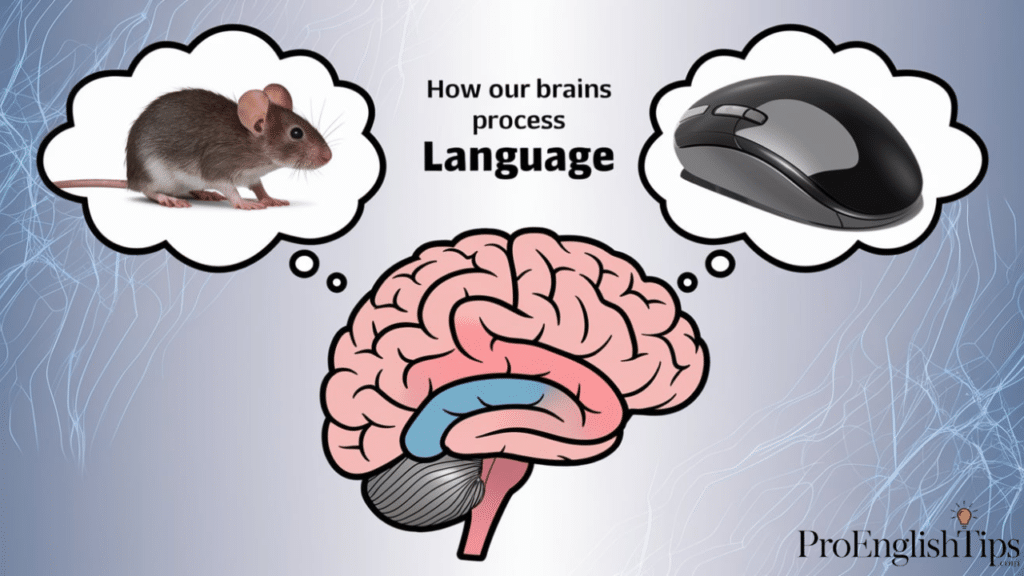
Global Communication Perspectives
Linguistic rules transcend national boundaries, creating a fascinating landscape of word variations that reflect cultural and technological diversity. The “mice” versus “mouses” debate becomes a microcosm of broader linguistic negotiations happening globally.
Profound Observation: Language is a living ecosystem, constantly adapting, negotiating, and evolving. The journey of “mouse” from a simple biological term to a complex technological descriptor exemplifies the remarkable plasticity of human communication.
Definitive Comparison: Mice vs Mouses
Linguistic Characteristics
| Aspect | Mice | Mouses |
|---|---|---|
| Traditional Usage | Biological term | Technological term |
| Grammatical Origin | Irregular plural | Non-standard adaptation |
| Scientific Accuracy | High | Moderate |
| Technical Precision | Limited | High |
| Academic Acceptance | Widespread | Emerging |
| Linguistic Complexity | Traditional | Innovative |
| Communication Domains | Biology, General Language | Technology, Computing |
| Historical Precedence | Centuries old | Recent development |
| Professional Preference | Scholarly writing | Technical documentation |
| Linguistic Flexibility | Constrained | Expanding |
Contextual Usage Examples
Biological Context (Mice): Professor Sarah Thompson might write: “The research team studied three mice in the neurological experiment, observing their behavioral patterns.”
Technological Context (Mouses): Technical support representative John Anderson could draft: “Our latest product line includes ergonomic mouses designed for prolonged computer use.”
Pronunciation Nuances
| Linguistic Feature | Mice | Mouses |
|---|---|---|
| Standard Pronunciation | /maɪs/ | /ˈmaʊzɪz/ |
| Phonetic Complexity | Simple | Slightly More Complex |
| Syllable Count | One | Two |
| Sound Variation | Consistent | Contextual |
| Linguistic Stress | Uniform | Variable |
Professional Domain Preferences
| Professional Field | Preferred Term | Rationale |
|---|---|---|
| Biological Research | Mice | Scientific Tradition |
| Computer Engineering | Mouses | Technical Specificity |
| Academic Writing | Mice | Linguistic Conservatism |
| Technical Documentation | Mouses | Descriptive Clarity |
| General Communication | Context-Dependent | Flexible Usage |
Computational Linguistics Perspective
Word Transformation reveals fascinating insights into how language processing adapts to technological innovations. The emergence of “mouses” demonstrates the dynamic nature of linguistic evolution, challenging traditional pluralization rules.
Semantic Considerations
The choice between “mice” and “mouses” extends beyond grammatical correctness. It reflects contextual usage, professional domain, and the ongoing negotiation between traditional linguistic norms and technological communication needs.
Key Insight: Language is not static but a living system that continuously adapts to technological and cultural changes. The “mice” vs “mouses” debate exemplifies this remarkable linguistic flexibility.
Conclusion
The pluralization rules surrounding “mouse” exemplify the dynamic nature of language. Whether you choose “mice” or “mouses”, context remains the ultimate arbiter of linguistic appropriateness.
Final Thoughts
Language is a living, breathing entity that continues to evolve. Technological terms and linguistic rules will perpetually dance in a complex choreography of meaning and communication.
Pro Tip: When in doubt, consider your audience, the specific context, and the most clear method of communication. Both “mice” and “mouses” have their place in the rich tapestry of English language usage.

Emma Carter is an experienced blogger at Pro English Tips. She loves helping people improve their English skills, especially through synonyms and creative language use. With a friendly writing style, Emma makes learning fun and easy for everyone. In her spare time, she enjoys reading and exploring new words, always looking for ways to inspire her readers on their journey to better communication.

